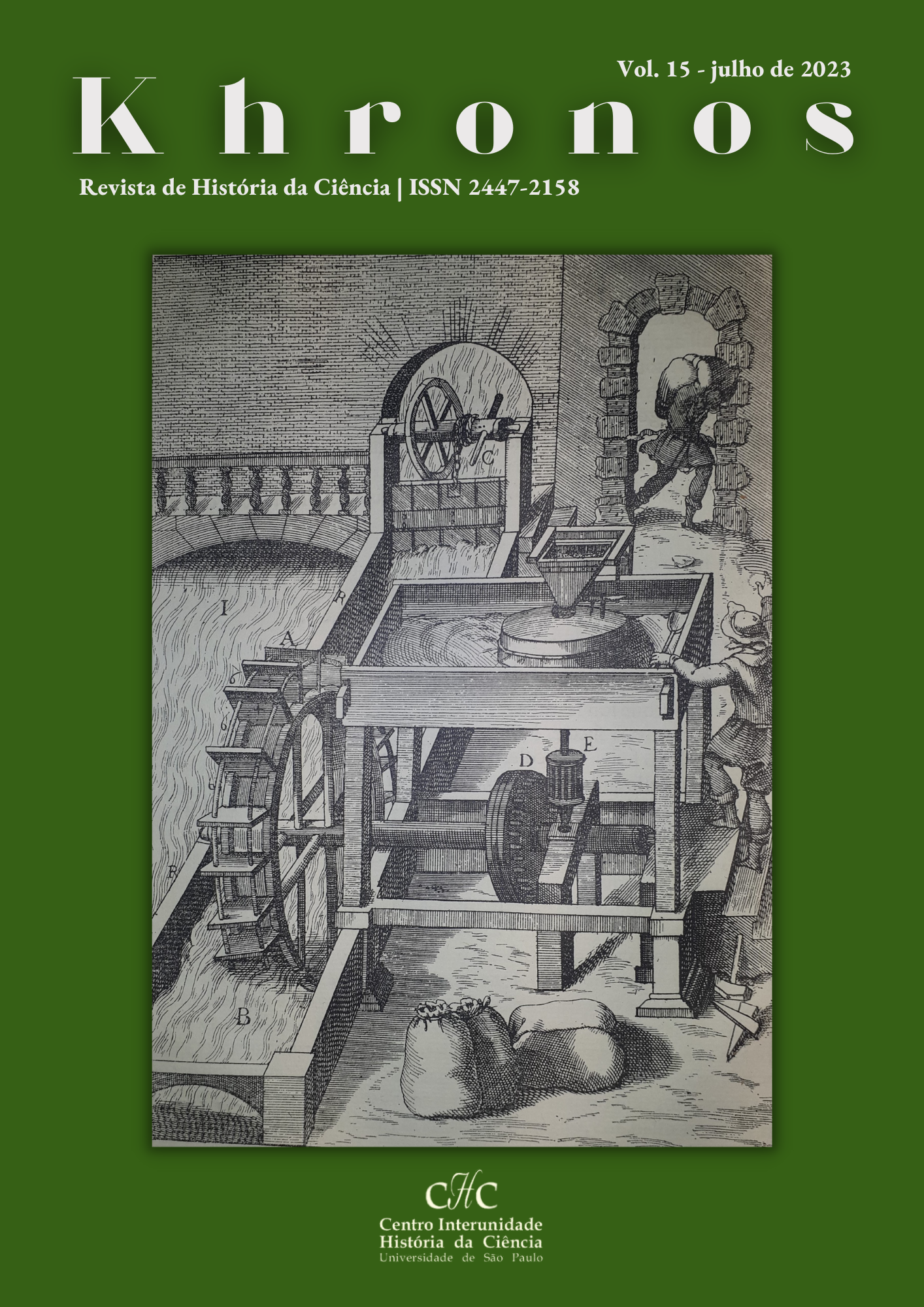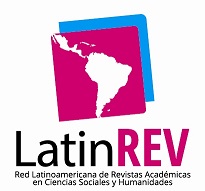From Dr. Frankenstein's Creature Spark of life to Dr. Jekyll's Metamorphosis: The Influence of Victorian Horror Tales and the Role of Science in stereotype creation and consolidation
DOI:
https://doi.org/10.11606/issn.2447-2158.i15p103-121Keywords:
history of knowledge, history of science, 19th century, stereotype, horror talesAbstract
In technological and scientific advances described in the horror tales of the 19th century, a society that was still unaware of the mechanisms of action of science, was astonished by the likelihood between science and the causes of evils of the time. Pests, unknown experiences, other ethnicities, caused fear in society.
Invisible communities were pushed into dirty and unhealthy ghettos, they were outcasts as a counterpoint from a progressive, wealthy, white and educated society.. In these ghettos lived the miserables, the monsters, that is, everyone who can represent, in some way, the enemy of society outlined with the achievements of the progress of science and technology.
Downloads
References
BACCEGA, Maria Aparecida. Os estereotipos e as diversidades. Comunicação & Educação, São Paulo: v. 13, p. 7–14, dez. 1998.
BAUMAN, Zygmunt. Medo Líquido. São Paulo: Companhia das Letras, 2008.
BRASIL, Ministério da Saúde. Ansiedade. fev. 2011. Biblioteca Virtual de Saúde [governamental]. Disponível em: https://bvsms.saude.gov.br/bvs/dicas/224_ansiedade.html. Acesso em: 27 fevereiro 2023.
BRESCIANI, Maria Stela. Londres e Paris no século XIX: o espetáculo da pobreza. São Paulo: Brasiliense, 2013(tudo é história, 52).
BURKE, P. O que é história do conhecimento? São Paulo: UNESP, 2015.
CORBIN, A.; COURTINE, J.-J.; VIGARELLO, G. História das emoções: do final do século XIX até hoje. Petrópolis: Vozes, 2020. v. 3.
DELUMEAU, J. História do medo no ocidente: 1300 a 1800 - uma cidade sitiada. 3. ed. São Paulo: Companhia das Letras, 2009.
GOULD, S. J. A falsa medida do homem. São Paulo: Martins Fontes, 1991.
KALIFA, D. Os Bas-fonds: história de um imaginário. São Paulo: EDUSP, 2013.
KIPLING, R. O Signo da Besta. Histórias sobrenaturais de Ruyard Kipling. Rio de Janeiro: Bertrand Brasil, 1996. p. 207–220.
KLEINGINNA, P. R.; KLEINGINNA, A. M. A categorized list of emotion definitions, with suggestions for a consensual definition. Motivation and Emotion, California - USA, v. 5, n. 4, p. 345–379, dez. 1981.
KOUTSOUKOS, S. S. M. Zoológicos Humanos: gente em exibição na era do imperialismo. Campinas: Editora Unicamp, 2020.
LA ROCQUE, L. de; TEIXEIRA, L. A. Frankenstein, de Mary Shelley, e Drácula, de Bram Stoker: gênero e ciência na literatura. História, Ciências, Saúde-Manguinhos, Rio de Janeiro, v. 8, n. 1, p. 11–34, jun. 2001.
LECOUTEUX, C. A Historia dos vampiros. a autopsia do mito. São Paulo: UNESP, 2005.
LIGHTMAN, B. Victorian Popularizers of Science. Designing Nature for New Audiences. Chicago: University of Chicago Press, 2007.
LOVECRAFT, H. P. O horror sobrenatural em literatura. São Paulo: Iluminuras, 2008.
NOTT, J. C.; GLIDDON, G. R. Types of Mankind: Or, Ethnological Researches, Based Upon the Ancient Monuments, Paintings, Sculptures, and Crania of Races, and Upon Their Natural, Geographical, Philological and Biblical History. Philadelphia: Lippincott, Grambo & Company, 1855. Disponível em: https://books.google.com.br/booksid=RtQKAAAAIAAJ&printsec=frontcover&hl=pt-BR&source=gbs_ge_summary_r&cad=0#v=onepage&q&f=false Acesso em: 27 fevereiro 2023.
PESAVENTO, S. J. Exposições Universais. espetáculos da modernidade do século XIX. São Paulo: Hucitec, 1997. v. Estudos Urbanos, (Arte e Vida Urbana).
PICCOLINO, M. Luigi Galvani and animal electricity: two centuries after the foundation of electrophysiology. Trends in Neurosciences, Philadelphia, USA, v. 20, n. 10, p. 443–448, 1 out. 1997.
RADCLIFFE, A. On the supernatural in Poetry. New Monthly Magazine, London, v. 16, n. 1, p. 145–152, 1826.
RIBEIRO, Suzi. et al. Divulgação Científica: uma conexão entre ciência e sociedade. In: VIANNA, Marcelo (org). Novos diálogos entre Ciência e Tecnologia. 1. ed. Rio Grande do Sul: IFRGS -Editora Fi, 2020. p. 127–148.
ROSENWEIN, B. História das Emoções. problemas e métodos. São Paulo, SP: Letra e Voz, 2011.
ROSENWEIN, B.; CRISTIANI, R. What Is the History of Emotions. Cambridge: Polity Press, 2018.
SHELLEY, M. Frankenstein ou o Prometeu Moderno. São Paulo: Excelsior, 2019.
STEVENSON, R. L. O médico e o monstro: o estranho caso do Dr. Jekyll e o Sr. Hyde. O Médico e o monstro e outros experimentos. Medo Clássico. Rio de Janeiro: Darkside, 2019. p. 248–325.
STOKER, B. Dracula. Rio de Janeiro: Darkside, 2018.
TIMBS, J. Mysteries of life, death, and futurity: illustrated from the best and latest authorities. London: Kent and Co Paternoster Row, 1863. Disponível em: http://archive.org/details/mysterieslifede00timbgoog. Acesso em: 27 fevereiro 2023.
VARMA, D. P. The Gothic Flame. London: Arthur Barker ltd, 1923. Disponível em: http://archive.org/details/in.ernet.dli.2015.459811. Acesso em: 27 fevereiro 2023.
Downloads
Published
Issue
Section
License
Copyright (c) 2023 Rosangela de Almeida Pertile

This work is licensed under a Creative Commons Attribution-NonCommercial 4.0 International License.
Authors who publish in this journal agree to the following terms:
- Authors retain the copyright and grant the journal the right to first publication, with the work simultaneously licensed under the Creative Commons Attribution License in the "Attribution-NonCommercial 4.0 International" (CC BY-NC 4.0) modality that allows sharing of the work with acknowledgment of authorship and initial publication in this magazine.
- Authors are authorized to assume additional contracts separately, for non-exclusive distribution of the version of the work published in this journal (eg, publishing in institutional repository or as a book chapter), with acknowledgment of authorship and initial publication in this journal.
- Authors are allowed and encouraged to publish and distribute their work online (eg in institutional repositories or on their personal page) at any point before or during the editorial process, as this can generate productive changes, as well as increase impact and citation of the published work (See The Effect of Open Access).
- Any doubts or complaints about copyright must be directed to the Editorial Board or qualify and express themselves in accordance with the guidelines of the Committee on Publications Ethics (COPE).





